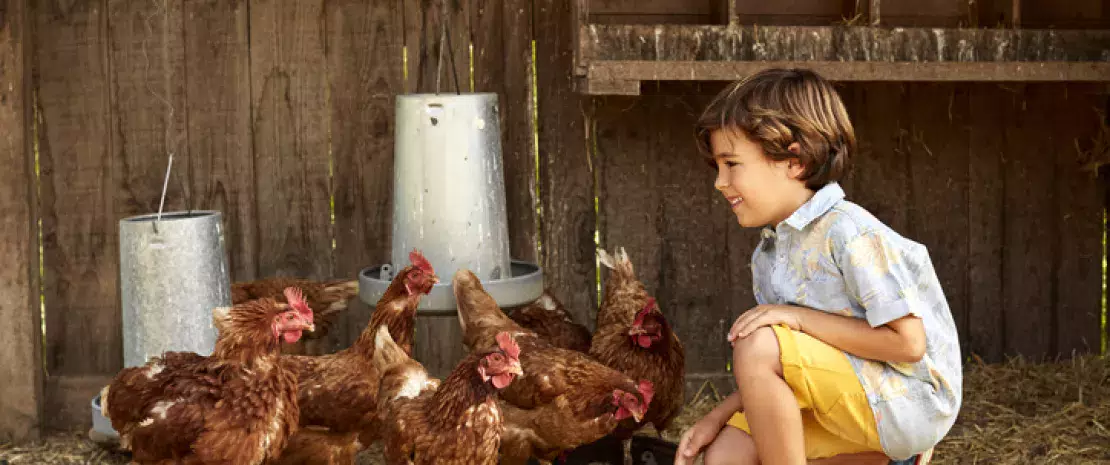A little farm dust for your asthma?
Previous studies have shown that growing up in a farm protects against asthma and allergies. This time, researchers tried to dig deeper by analyzing the microbial composition of dust in farm homes vs. non-farm homes. Objective: identifying an indoor microbiota that promotes good health.
- Learn all about microbiota
- Microbiota and related conditions
- Act on your microbiota
- Publications
- About the Institute
Healthcare professionals section
Find here your dedicated section
Sources
This article is based on scientific information

About this article
Young children have always had to adapt to the diversity and abundance of their environmental microbiome. But with urbanization, our homes have lost some of this abundance and diversity, and the frequency of asthma (and allergies) has simultaneously increased. Many scientists assume there is a link between these two phenomena and are trying to document it and understand underlying mechanisms. An international research team recently made progress on this matter.
Mirror of the environment
First step: analysis of the microbiota (population of microorganisms) present in the dust collected in farms on the one hand, and other homes on the other hand, as part of two studies conducted with cohorts of 2-month old Finnish children (for whom asthma was diagnosed in the first 6 years of life). Important composition differences were observed: dust from farm homes had strong bacterial diversity and abundance, as well as small amounts of specific bacteria and species of (sidenote: archaea Archaea are small microorganisms with the same morphology as bacteria but with a different genetic composition ) typically associated to the (sidenote: rumen First compartment of the stomach of ruminants ) of cattle. The indoor microbiota of non-farm homes contained significant proportions of bacteria associated to humans. Finally, the abundance of fungi varied depending on homes, although not significantly..
Protective diversity
These differences in composition were linked to the development of asthma in the first six years of life. Result: in children growing in non-rural environments, the risk of developing asthma decreased as the microbial composition of indoor dust got closer to that of farms. This pattern was later confirmed in German children living in rural areas. Although the “protective farm effect” is still unclear, the pool of data collected confirms the hypothesis that the presence of specific bacteria and archaea in the indoor environment, and especially in the dust, can protect against asthma. This is good news for the development of a new type of preventive strategies.





